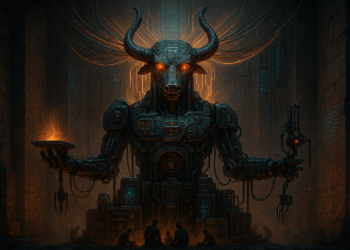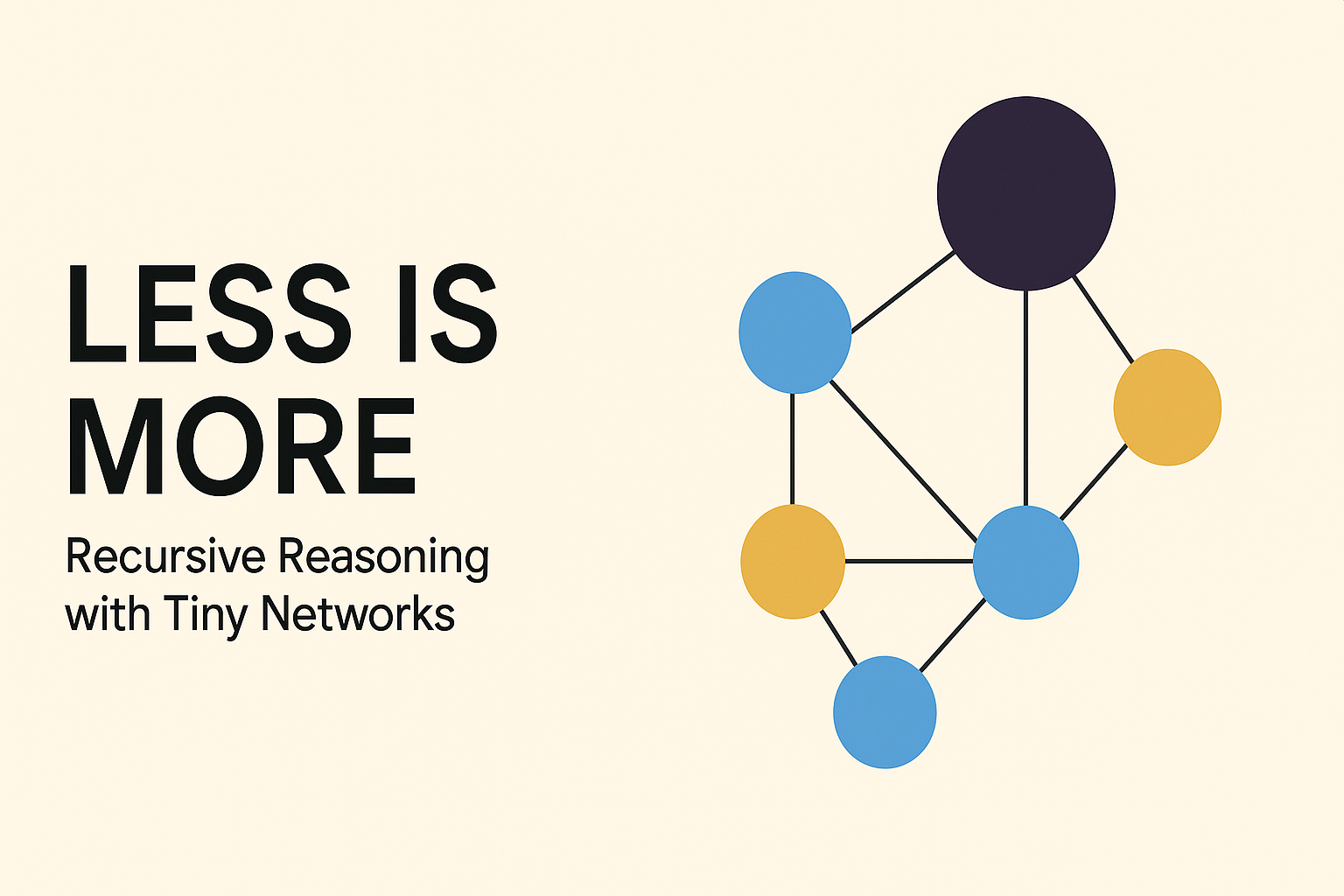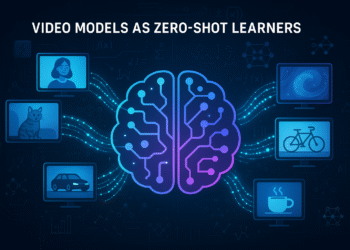TL;DR
Both OpenAI’s GPT-5 and xAI’s Grok 4 represent the cutting edge of AI in 2025, but they excel in different domains. GPT-5, released August 7, 2025, dominates coding benchmarks with a 74.9% score on SWE-bench Verified and offers superior enterprise integration through ChatGPT Agent. Grok 4, launched July 9, 2025, leads in complex reasoning tasks, achieving 16.2% on ARC-AGI-2 and 50% on Humanity’s Last Exam. GPT-5 costs $1.25/M input tokens versus Grok 4’s $3/M, while consumer plans range from ChatGPT Pro at ~$200/month to SuperGrok Heavy at $300/month.
For coding and enterprise workflows, GPT-5 is the clear winner. For research-heavy reasoning tasks with live web integration, Grok 4 Heavy takes the crown.
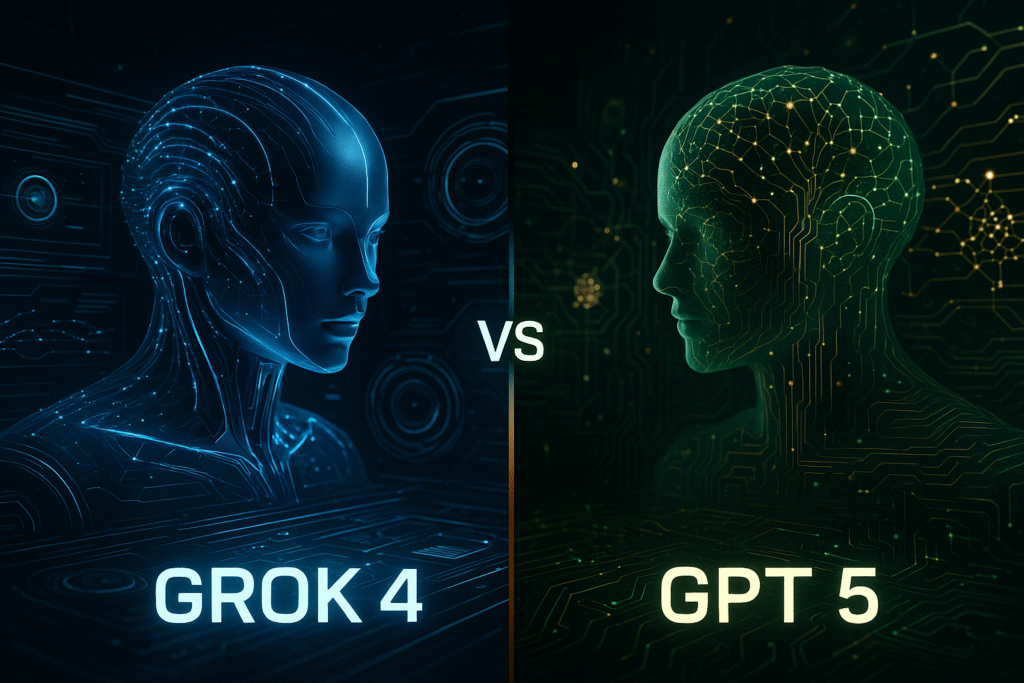
The New AI Landscape: Two Titans Emerge
The summer of 2025 has fundamentally reshaped the artificial intelligence landscape. Within a month, two tech giants released their most ambitious AI models yet, setting the stage for an unprecedented battle for AI supremacy. OpenAI’s GPT-5 and xAI’s Grok 4 aren’t just incremental improvements—they represent quantum leaps in AI capability, each targeting different aspects of human-level intelligence.
This comprehensive analysis dissects every aspect of these flagship models, from their technical architectures to real-world performance, pricing strategies, and practical applications. Whether you’re a CTO evaluating enterprise AI solutions, a developer choosing your next coding companion, or a researcher pushing the boundaries of artificial intelligence, this guide provides the definitive comparison you need.
Release Timeline and Strategic Context
The timing of these releases wasn’t coincidental. Grok 4’s July 9 launch positioned xAI as the first to market with next-generation capabilities, while GPT-5’s August 7 release came with the polish and ecosystem integration that OpenAI is known for. This strategic dance reflects broader industry dynamics, with xAI leveraging its Colossus supercomputer’s 200,000 GPUs to train models at unprecedented scale, while OpenAI focused on creating a “unified system” that seamlessly routes between different reasoning modes.
The competitive pressure is palpable. As Simon Willison noted in his detailed analysis, GPT-5 represents OpenAI’s most reliable model yet, while Grok 4’s multi-agent architecture pushes the boundaries of what’s possible with collaborative AI reasoning.
Model Architectures: Different Philosophies, Different Strengths
GPT-5: The Unified Approach
GPT-5’s architecture represents a philosophical shift toward seamless user experience. Rather than forcing users to choose between models, GPT-5 employs an intelligent router that automatically selects the appropriate reasoning level based on query complexity. This unified system encompasses:
- Base GPT-5: Handles standard queries with fast response times
- GPT-5 Mini: Lightweight version for simple tasks
- GPT-5 Nano: Ultra-efficient model for high-volume applications
- GPT-5 Pro: Extended reasoning mode for complex problems
The system supports up to 272,000 input tokens plus 128,000 reasoning/output tokens, totaling approximately 400,000 tokens of context. This massive context window enables GPT-5 to maintain coherence across lengthy documents, extensive codebases, and complex multi-turn conversations.
Grok 4: The Multi-Agent Revolution
Grok 4 takes a fundamentally different approach with its multi-agent architecture. The standard Grok 4 operates as a single, highly capable agent, while Grok 4 Heavy deploys multiple AI agents that collaborate, cross-check, and refine each other’s work in real-time. This approach, as described by xAI, mirrors how human research teams operate—with different specialists contributing their expertise to solve complex problems.
Key architectural features include:
- 256,000 token context window: Substantial but smaller than GPT-5’s capacity
- Native tool use: Trained from the ground up to use tools like code interpreters and web browsers
- Real-time search integration: Direct access to live web and X platform data
- Reinforcement learning at scale: Trained using RL techniques across xAI’s massive GPU cluster
Benchmark Performance: Where Each Model Excels
Coding Supremacy: GPT-5’s Domain
In software engineering tasks, GPT-5 establishes clear dominance. According to Vellum’s comprehensive benchmark analysis, GPT-5 achieves:
- SWE-bench Verified: 74.9% (industry-leading)
- Aider Polyglot: 88% (new record for multi-language code editing)
- Internal frontend development tests: Preferred over o3 in ~70% of cases
These results translate to real-world impact. Major coding platforms like Cursor, Windsurf, and Vercel have reported GPT-5 as their best-performing model for repository-scale code generation and debugging tasks.
Reasoning Excellence: Grok 4’s Breakthrough
Where Grok 4 truly shines is in complex reasoning tasks that require deep analytical thinking. Independent analysis from The Decoder confirms Grok 4’s superiority in several key benchmarks:
- ARC-AGI-2: 16.2% vs GPT-5’s 9.9% (a 63% improvement)
- Humanity’s Last Exam: ~50% (first model to break this threshold)
- ARC-AGI-1: 68% vs GPT-5’s 65.7%
These benchmarks are particularly significant because they test general reasoning ability rather than memorized knowledge, making them better predictors of true intelligence.
Scientific and Mathematical Reasoning
Both models excel in scientific domains but with different strengths:
GPT-5 Performance:
- GPQA Diamond: 89.4% (PhD-level science questions)
- AIME 2025: 100% with Python tools (perfect score on high school math competition)
- HealthBench Hard: 46.2% (medical reasoning with physician validation)
Grok 4 Performance:
- GPQA: 88% (competitive with GPT-5)
- AIME 2024: 94% (strong mathematical reasoning)
- MMLU-Pro: 87% (broad academic knowledge)
Pricing and Value Proposition Analysis
API Pricing: The Developer’s Perspective
The pricing structures reveal different strategic priorities:
GPT-5 API Pricing:
- Input tokens: $1.25 per million
- Output tokens: $10 per million
- GPT-5 Mini: $0.25/$2 per million tokens
- GPT-5 Nano: $0.05/$0.40 per million tokens
Grok 4 API Pricing:
- Input tokens: $3 per million (140% more expensive)
- Output tokens: $15 per million (50% more expensive)
- Cached input tokens: $0.75 per million
- Live Search: $25 per 1,000 sources
As detailed in xAI’s pricing documentation, Grok 4’s higher costs reflect its more compute-intensive multi-agent architecture and real-time search capabilities.
Consumer Subscription Tiers
OpenAI’s ChatGPT Plans:
- Free: Limited GPT-5 access with usage caps
- Plus: $20/month with expanded GPT-5 usage
- Pro: ~$200/month with unlimited GPT-5 and GPT-5 Pro access
- Team/Enterprise: Custom pricing with admin controls and compliance features
xAI’s Grok Plans:
- Premium+: Basic Grok access through X platform
- SuperGrok: $30/month for standard Grok 4 access
- SuperGrok Heavy: $300/month for Grok 4 Heavy and priority features
The pricing disparity is significant—SuperGrok Heavy costs 50% more than ChatGPT Pro while offering different value propositions.
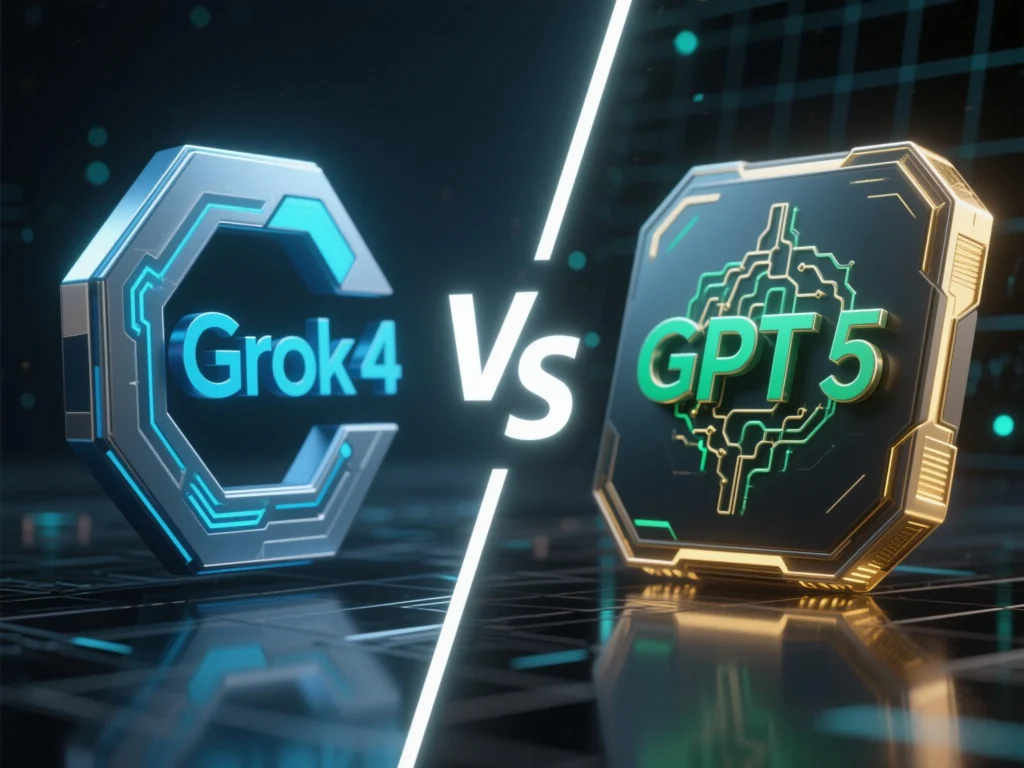
Tool Use and Agentic Capabilities: The Future of AI Interaction
ChatGPT Agent: The Enterprise Solution
OpenAI’s ChatGPT Agent, launched alongside GPT-5, represents a mature approach to AI automation. The system operates a virtual computer environment where it can:
- Browse the web and interact with websites
- Fill out forms and manipulate spreadsheets
- Connect to enterprise systems through pre-built connectors
- Execute multi-step workflows with permission controls
- Integrate with Gmail, Google Drive, GitHub, and other business tools
This enterprise-ready approach includes comprehensive security measures, system cards documenting capabilities and limitations, and admin controls for organizational deployment.
Grok 4: Native Tool Mastery
Grok 4’s approach to tool use is fundamentally different—it was trained from the ground up using reinforcement learning to use tools naturally. According to xAI’s technical documentation, this native integration enables:
- Autonomous web browsing with visible search traces
- Real-time X platform integration for social media insights
- Code interpretation and execution
- Multi-hop information retrieval across diverse sources
The key advantage is seamlessness—Grok 4 doesn’t need explicit instructions to use tools; it naturally incorporates them into its reasoning process.
Context Windows and Memory: Handling Complex Tasks
The context window comparison reveals different optimization strategies:
GPT-5’s Massive Context:
- 272,000 input tokens
- 128,000 reasoning/output tokens
- Total effective context: ~400,000 tokens
- Optimized for long-form document analysis and extensive code repositories
Grok 4’s Focused Context:
- 256,000 total tokens
- Optimized for real-time information integration
- Efficient handling of multi-agent coordination
While GPT-5’s larger context window provides advantages for document-heavy tasks, Grok 4’s architecture compensates through its ability to dynamically retrieve and integrate external information.
Safety, Reliability, and Factual Accuracy
GPT-5’s Reliability Focus
OpenAI has positioned GPT-5 as its most reliable model yet, with significant improvements in factual accuracy:
- 45% fewer factual errors compared to GPT-4o
- 65% reduced hallucination rate for GPT-5 with thinking mode
- Enhanced deception detection and mitigation
- Comprehensive safety testing with over 5,000 hours of red teaming
The GPT-5 system card details extensive safety measures, including improved handling of dual-use queries and better failure modes when faced with impossible tasks.
Grok 4’s Transparency Approach
xAI emphasizes transparency in Grok 4’s operation:
- Visible search traces showing information sources
- Multi-agent reasoning logs for complex queries
- Real-time verification through live web access
- Emphasis on showing work rather than hiding reasoning processes
However, recent controversies around Grok’s content moderation have raised questions about its suitability for brand-sensitive enterprise deployments.
Enterprise Features and Compliance
OpenAI’s Enterprise Maturity
OpenAI’s enterprise offering reflects years of organizational deployment experience:
- Compliance: SOC 2, GDPR, CCPA, HIPAA-ready configurations
- Administration: SSO, SCIM, domain verification, user management
- Data governance: Training opt-out by default, data residency options
- Integration: Pre-built connectors for major business platforms
- Support: SLAs, dedicated support teams, implementation assistance
xAI’s Emerging Enterprise Story
xAI’s enterprise capabilities are newer but growing:
- Compliance: SOC 2 Type 2, GDPR, CCPA certifications
- Government: Dedicated “Grok for Government” program
- API: Enterprise-grade API with usage analytics
- Security: Advanced security features for sensitive deployments
While xAI’s enterprise features are less mature than OpenAI’s, the rapid development pace suggests this gap may narrow quickly.
Real-World Use Cases: Where Each Model Excels
GPT-5’s Sweet Spots
Software Development:
- Repository-scale code analysis and refactoring
- Frontend development with complex UI requirements
- Debugging and optimization across multiple programming languages
- Integration with existing development workflows
Enterprise Automation:
- Document processing and analysis
- Customer service automation with high accuracy requirements
- Compliance-sensitive applications in regulated industries
- Multi-system integration and workflow orchestration
Content Creation:
- Long-form content with extensive research requirements
- Technical documentation and specification writing
- Educational content with factual accuracy requirements
Grok 4’s Optimal Applications
Research and Analysis:
- Real-time market research with social media integration
- Academic research requiring multi-source verification
- Investigative journalism with live fact-checking
- Competitive intelligence gathering
Creative and Experimental Work:
- Experimental AI applications requiring cutting-edge reasoning
- Creative projects benefiting from multi-agent collaboration
- Research into AI capabilities and limitations
- Applications requiring transparent reasoning processes
Social Media and Communication:
- X platform integration for social media management
- Real-time trend analysis and response
- Community management with context awareness
- Viral content analysis and prediction
Performance Optimization and Cost Management
GPT-5 Optimization Strategies
To maximize GPT-5’s value:
- Model Selection: Use GPT-5 Nano for simple tasks, reserve GPT-5 Pro for complex reasoning
- Context Management: Leverage the large context window for batch processing
- Reasoning Controls: Adjust reasoning effort based on task complexity
- Caching: Implement response caching for repeated queries
Grok 4 Cost Optimization
For Grok 4 deployments:
- Search Optimization: Monitor Live Search usage to control per-source costs
- Agent Selection: Use standard Grok 4 unless multi-agent reasoning is essential
- Context Efficiency: Optimize prompts for the 256k token limit
- Batch Processing: Group related queries to maximize context utilization
Future Roadmaps and Development Trajectories
OpenAI’s Vision
OpenAI’s roadmap emphasizes:
- Continued integration of reasoning and fast response modes
- Enhanced multimodal capabilities including video understanding
- Deeper enterprise integration and compliance features
- Expansion of ChatGPT Agent capabilities
xAI’s Ambitious Plans
xAI has outlined aggressive expansion plans:
- AI coding model launch (August 2025)
- Multi-modal agent capabilities (September 2025)
- Video generation model (October 2025)
- Integration with Tesla’s autonomous systems
- Expansion into robotics and physical world interaction
Procurement Checklist for Decision Makers
Strategic Assessment
Primary Use Case Evaluation:
- Coding and software development (favor GPT-5)
- Research and real-time analysis (favor Grok 4)
- Enterprise automation (favor GPT-5)
- Creative and experimental applications (consider Grok 4)
Technical Requirements:
- Required context window size (GPT-5: 400k, Grok 4: 256k)
- Real-time web access needs (Grok 4 advantage)
- Multi-agent reasoning requirements (Grok 4 Heavy)
- Integration with existing systems (GPT-5 advantage)
Compliance and Security
Regulatory Requirements:
- HIPAA compliance needs (GPT-5 more mature)
- Government/defense applications (both offer specialized programs)
- Data residency requirements (evaluate both options)
- Training data opt-out requirements (GPT-5 default, Grok 4 available)
Risk Assessment:
- Brand safety requirements (GPT-5 more conservative)
- Content moderation needs (consider recent Grok controversies)
- Vendor lock-in concerns (evaluate API compatibility)
- Long-term support and stability (OpenAI more established)
Financial Planning
Cost Structure Analysis:
- API token volume estimates (GPT-5 cheaper per token)
- Subscription vs. API cost comparison
- Live search usage for Grok 4 ($25/1000 sources)
- Enterprise support and SLA costs
Budget Allocation:
- Development team subscriptions (Pro vs. Heavy tiers)
- Production API costs
- Training and onboarding expenses
- Compliance and security audit costs
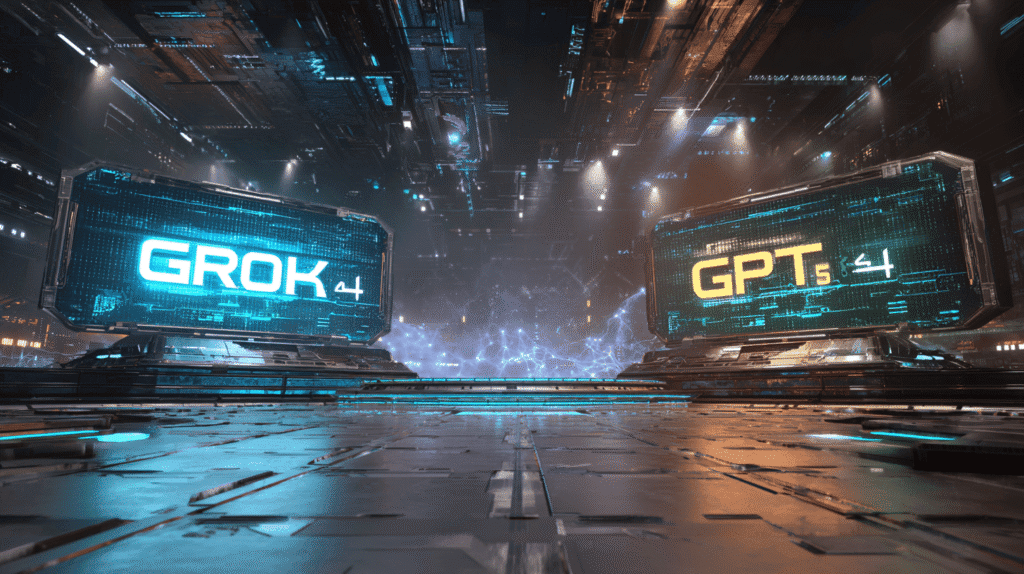
The Verdict: Choosing Your AI Champion
The choice between GPT-5 and Grok 4 ultimately depends on your specific needs, risk tolerance, and strategic priorities.
Choose GPT-5 if you:
- Prioritize coding and software development tasks
- Need mature enterprise features and compliance
- Require extensive context handling for document analysis
- Value proven reliability and factual accuracy
- Want seamless integration with existing business tools
Choose Grok 4 if you:
- Focus on cutting-edge reasoning and research tasks
- Need real-time web and social media integration
- Value transparency in AI reasoning processes
- Are comfortable with higher costs for premium capabilities
- Want to be at the forefront of multi-agent AI systems
Consider a hybrid approach if you:
- Have diverse use cases spanning both models’ strengths
- Can manage multiple vendor relationships
- Want to hedge against single-vendor dependency
- Have the technical resources to optimize for each model’s strengths
Looking Ahead: The AI Arms Race Continues
The release of GPT-5 and Grok 4 marks not an endpoint but a new beginning in the AI arms race. Both models represent significant advances in artificial intelligence, yet they also highlight how much further we have to go toward artificial general intelligence.
As noted by industry analysts, the competition between these models is driving rapid innovation across the entire AI ecosystem. Smaller model providers are being forced to specialize or risk obsolescence, while the major players continue to push the boundaries of what’s possible.
The next 12 months will likely see continued leapfrogging between OpenAI and xAI, with other players like Anthropic, Google, and emerging startups contributing their own innovations. For organizations and developers, this competition translates to rapidly improving capabilities, more competitive pricing, and an expanding array of specialized tools and features.
The AI revolution is far from over—it’s just getting started. Whether you choose GPT-5, Grok 4, or hedge your bets with both, you’re participating in one of the most transformative technological shifts in human history. Choose wisely, but more importantly, choose quickly—in the fast-moving world of AI, the early adopters often capture the greatest advantages.
Sources and References:


